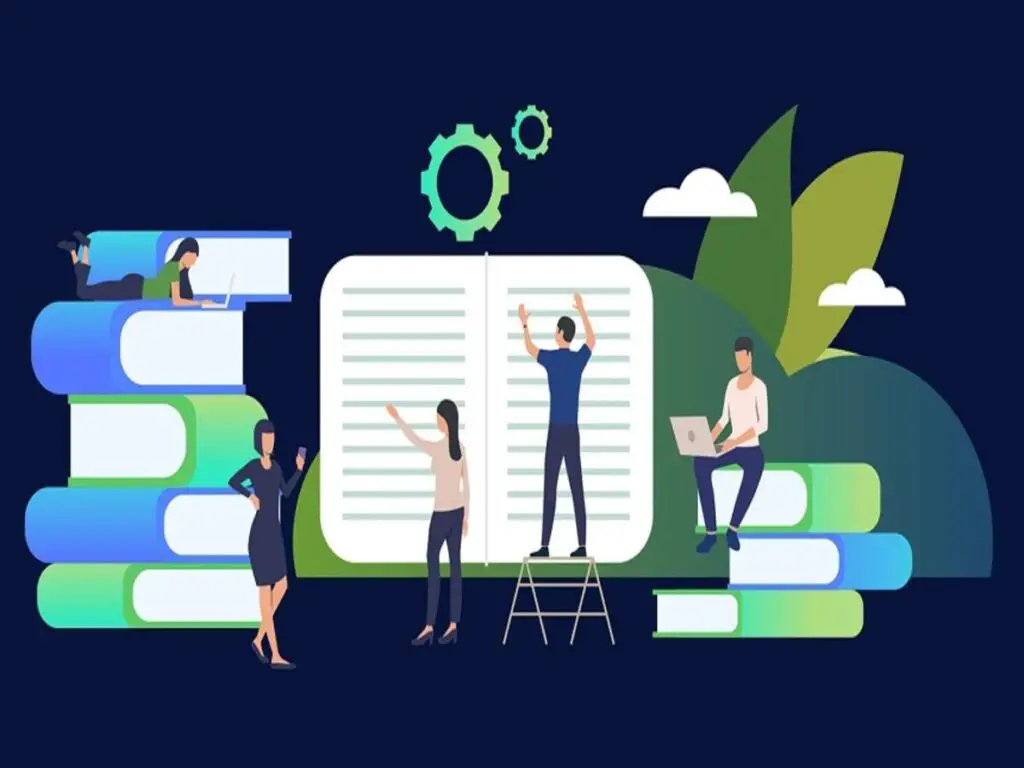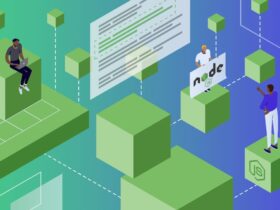

Top 10 Cloud Computing Books For Newbie and Professionals
Cloud Computing is the most rapid-growing technology in the IT industry. It is now established as a perfect and effective solution in giving an easy, on-demand, and scalable computing infrastructure to many platforms. The use of Cloud Computing is everywhere, like education, business, healthcare, agriculture, project management, daily life, and many more. As a result, both amateur and expert knowledge seekers search for learning-staff like Cloud Computing books.
The word ‘Cloud’ of ‘The Cloud Computing’ is a metaphoric presentation of ‘The Internet.’ Plenty of books are available on this topic. As a user of technology, it has become essential to know about Cloud computing because it has already taken over the IT sector. Therefore, it is obvious that it will be very tough to remain in the competitive world without knowing Cloud Computing.
Best Cloud Computing Books Available
In this write-up, we will mention and discuss some very essential books written on cloud computing. You can get books that are for elementary-level learners and gradually books for the experts. Deep study books like the development of Cloud computing, Security, Evolution, etc. books are also present in our list. We believe you can get all categories of books that you may need to know about cloud computing.
1. Cloud Computing: Concepts, Technology & Architecture
The newbies of the Cloud Computing topic will always look for some basic questions. This book is a good solution for them. It has started with the fundamental concepts of cloud computing. Starting from the basic introduction, you will chronologically get different mechanisms, architecture design, working procedures, and different case studies. This is one of the best cloud computing books for both amateur and advanced learners because it has discussed every topic from fundamental to expert level.
Table of Contents
- Fundamental Cloud Computing
- Understanding Cloud Computing
- Fundamental Concepts and Models
- Cloud-Enabling Technology
- Fundamental Cloud Security
- Cloud Computing Mechanisms
- Cloud Infrastructure Mechanism
- Specialized Cloud Mechanisms
- Cloud Management Mechanisms
- Cloud Security Mechanisms
- Cloud Computing Architecture
- Fundamental Cloud Architectures
- Advanced Cloud Architectures
- Specialize Cloud Architectures
- Working with Clouds
- Cloud Delivery Model Considerations
- Cost Metrics and Pricing Models
- Service Quality Metrics and SLAs
2. Cloud Computing
This is another fundamental cloud computing book that provides general ideas about cloud computing. The book shows the arena of cloud computing, like where and how it is used. The development of different services provided by cloud computing and usages in family, community, and corporation are discussed in detail in the book. The book has put special emphasis on different collaborations. Without any doubt, you can consider this book as one of the best cloud computing books available online.
Table of Contents
- Cloud Computing Features
- Developing Cloud Services
- Cloud Computing for the Family
- Cloud Computing for the Community
- Cloud Computing for the Corporation
- Cloud Services Uses
- Collaborating on Event and Contact Management
- Collaborating on Project Management
- Collaborating on Word Processing
- Collaborating on Database Storage and Sharing Files
- Collaborating via Web-based Storage and Sharing Files
- Collaborating via Social Networks and Groupware
- Collaborating via Blogs and Wikis
3. A Brief Guide to Cloud Computing
The name tells the aim, intention, purpose, and content of the book. This small masterpiece has nicely described cloud computing mentioning all possible corners. Wishing the two parts, the book brought the competitive world-circling cloud computing. After that, a clear and concise concept of hardware and software is given. It shows the security and privacy aspects of cloud computing. The book also discusses troubleshooting and future aspects of the topic.
Table of Contents
- Part I: Cloud Computing Basics
- The Rise of Fluffy Computing
- Cloud Computing and Web 2.0
- The software in the Cloud
- Hardware in the Cloud
- Part II: Cloud Computing Implications
- Security, Privacy, and Reliability
- The Second Digital Revolution
- The Battle for the Cloud
- Trouble in the Boardroom
- The Personal Cloud
- Cloud Computing in the Future
4. Advances in Clouds: Research in Future Cloud Computing
The book discusses the current scenario and maturity of Cloud computing. Different researches related to the topic and future aspects have come up nicely in the book. The chronological development of the book provides the basic concept and advanced level concept about cloud computing. The book is one of the perfect cloud computing books for advanced readers.
Table of Contents
- Cloud Definition
- Characteristics of Clouds
- Classification of Characteristics
- Definition: What is a Cloud
- Current Landscape
- Uptake
- Maturity/ Advances Made
- Potentials and Missed Opportunities
- Deficiencies
- Room for Improvement
- Future Usage & Relevance for Europe
- The relevance of cloud System for European Industry & Research
- The Future Landscape of European Clouds
- Analysis: Additional Characteristics
- Research Issues
- Research Types & Their Relevance
- Realization of Effort Analysis
- Research Issues and Their Classification
5. Cloud Computing and Software Services: Theory and Techniques
To understand the landscape of cloud computing, this book will play a very important role for the readers. The book will very systematically insert the knowledge of enterprise cloud and different software services. What are the reasons and applications of cloud computing will be very clear after reading this book. The large-scale computing service of the cloud has paramount importance in the discussion of this book.
Table of Contents
- Understanding the Cloud Computing Landscape
- Science Gateways: Harnessing Clouds and Software Services for Science
- Enterprise Knowledge Clouds: Next Generation Knowledge Management System
- Teal Cases and Applications of Cloud Computing
- Large-Scale Data Processing
- Towards a Reliable Cloud Computing Service
- Abstractions for Cloud Computing with Condor
- Exploiting the Cloud of Computing Environments: An Application’s Perspective
- Granules: A Lightweight Runtime for Scalable Computing with Support for Map-Reduce
- Dynamic and Adaptive Rule-Based Workflow Engine for Scientific Problems in Distributed Environments
- Transparent Cross-Platform Access to Software Services Using GridSolve and GridRPC
- High-Performance Parallel Computing with Cloud and Cloud Technologies
- BioBLAB: Bioinformatics Data Analysis Using cloud computing Graphical Workflow Composers
- Scale-Out RFD Molecule Store for Efficient, Scalable Data Integration, and Querying
- Enabling XML Capability for Hadoop and Its Applications in Healthcare
- Toward a QoS-Focused SaaS Evaluation Model
- Risk Evaluation-based Selection Approach for Transactional Services Composition
6. Cloud Computing Bible
Cloud Computing Bible is the ideal book for learning Cloud computing. The book has started with the basic teaching of cloud computing and then chronologically and perfectly touched all the aspects of the topic. The definition, architecture, and different services provided by cloud computing are well discussed in the book.
The use of cloud computing in different web service platforms like Google, Amazon, and Microsoft is well covered in the book. Special emphasis is given to different applications and Mobile clouds. This book is undoubted to be one of the best cloud computing books.
Table of Contents
- Part I: Examine the Value Proposition
- Defining Cloud Computing
- Assessing the Value Proposition
- Understanding Cloud Architecture
- Understanding Services and Applications by Type
- Part II: Using Platforms
- Understanding Abstraction and Visualization
- Capacity Planning
- Exploring Platform as a Service
- Using Google Web Services
- Using Amazon Web Services
- Using Microsoft Cloud Services
- Part III: Exploring Cloud Infrastructures
- Managing the Cloud
- Understanding Cloud Security
- Part IV: Understanding Services and Applications
- Understanding Service-Oriented Architecture
- Moving Applications to the Cloud
- Working with Cloud-Based Storage
- Working with Productivity Software
- Wag Webmail Services
- Communication with the Cloud
- Using Media Streaming
- Using the Mobile Cloud
- Working with Mobile Devices
- Working with Mobile Web Services
7. Cloud Computing for Business: The Open Group Guide
The book started with the definition given by NIST, different characteristics, service models, deployment models, etc. The importance of the cloud is well discussed in the book with its agility, productivity, quality, and cost. The readers can get a clear guideline by seeing business opportunities in cloud computing.
Knowledge seekers will get a systematic guideline to build his/ or her cloud vision after reading the book. The risk related to is one of the main focus topics in this book. After all, this book is an all-in-one book for Cloud Computing.
Table of Contents
- What is Cloud
- Why is Cloud
- Establishing Your Cloud Vision
- Buying Cloud Services
- Understanding Cloud Risk
- Building Return on Investment from Cloud Computing
- The Challenge
8. Cloud Computing: Principles, Systems, and Applications
This book is the place where different important issues regarding the principles of Cloud computing came up. You will understand different important issues of the topic like resource management, Cloud Provisioning, Cloud Compliance, etc. The book is for the advanced level readers; however, a reader with elementary knowledge can also read and understand the book.
Table of Contents
- Part I: Cloud Base
- Tools and Technologies for Building Clouds
- A Taxonomy, Survey, and Issues for Cloud Computing Ecosystems
- Towards A taxonomy for Cloud Computing from an e-Science Perspective
- Examining Cloud Computing from the Perspective of Grid and Computer-Supported Cooperative Work
- Overview of Cloud Standards
- Part II: Cloud Seeding
- Open and Interoperable Clouds: The Cloud@Home Way
- A Peer-to-peer Framework for Supporting Map-Reduce Applications in Dynamic Cloud Environments
- Enhanced Networpport for Scalable Computing Clouds
- YML-PC: A Reference Architecture Based on Workflow for Building Scientific Private Clouds
- An Efficient Framework for Running Applications
- Resource Management for Hybrid Grid
- Peer-to-peer Cloud Provisioning: Service Discovery and Load-Balancing
- Mixing Grids and Clouds: High-Throughput Science Using the Nimrod Tools Family
- Part III: Cloud Breaks
- Cloud Compliance: A Framework for Using Cloud Computing in a Regulated World
- Cloud Computing: Data Confidentiality and Interoperability Challenges
- Security Issues to Cloud Computing
- Securing the Cloud
- Part V: Cloud Feedback
- Technologies for Enforcement and Distribution Policy in Cloud Architectures
- The PRISM On-demand Digital Media Cloud
- Cloud Economics: Principles, Costs, and Benefits
- Towards Application-Specific Service Level Agreements: Experiments in Clouds and Grids
9. Cloud Computing Tutorial
Cloud computing tutorial is a simply easy learning book. The book is written for beginners where they can start with basic and gradually reach to advance level. However, basic knowledge of computers, the internet, database, and concepts on networking.
The book has discussed different models of the cloud with its layout, advantages, and disadvantages. To know all possible information from history to the present state, this book acts as one of the best Cloud Computing books.
Table of Contents
- Cloud Computing
- Security & Privacy
- Lock-In
- Isolation Failure
- Management Interface Compromise
- Insecure or Incomplete Data Deletion
- Cloud Computing- Planning
- Cloud Computing- Architecture
- Cloud Computing Infrastructure
- Cost-Effective
- Security
- Issues
- Full Control Over Computing Resources Through Administrative Access to VMS
- Flexible, Interoperability with Legacy Applications
10. Cloud Security and Privacy
Almost all the cloud computing books cover security and privacy issues related to the topic, but this is the book where the only discussion point is cloud and cybersecurity and privacy. Without any doubt, this is one of the best cloud computing books that provides a clear and detailed solution to cloud security and privacy. Different minor issues like audit and compliance are a prime discussion point with a comprehensive discussion.
Table of Contents
- ‘Mind the Gap’ The Evolution of Cloud Computing
- What is Cloud Computing
- Infrastructure Security
- Data Security and Storage
- Inventory and Access management
- Security Management in the Cloud
- Privacy
- Audit and Compliance
- Example of Cloud Service Providers
- Security as a Cloud Service
- The Impact of Cloud Computing on the Role of Corporate IT
- Conclusion and the Future of Cloud
Finally
Professor John McCarthy commented in 1961 that computing would become an organized public utility like the telephone. The present proves his thoughts. And now, it has come to such a level that people have no option to deny it.





























Leave a Reply